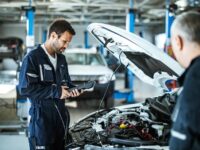The Ever Growing Scrap Car Industry

The sale of reusable salvage from old automobiles is just a small item of the car recycling pie. Concerning 65 percent of a junked vehicle is made from steel (the remainder is made from various other steels plus glass, rubber and upholstery). The price for scrap car in Singapore steel and iron, though unpredictable, often floats around $250 per ton. Growing markets in Asia have led to higher demand for scrap steel, bolstering the market worldwide. With 14 million loads of steel from cars being ditched every year contributing to an industry-wide total amount of 76 million lots of recycled steel and iron, it’s very easy to see that car recycling is a multibillion buck market.
Relishing the Scraps
Steel is not the only material recycled from old vehicles and trucks. Regarding 86 percent of a vehicle’s material content can be reused, consisting of plastics, other metals and even more. Take vehicle tires. About 100 million tires are recycled every year, providing rubber for points like playground surfaces, yard compost and also new tires. Meanwhile, usual vehicle batteries are among the most recycled things in the country. The EPA records that in 2013, recycling rates of batteries were close to 99 percent.
Within the battery itself, a lot of the lead– more than 99 percent– can be liquefied and reused in much the same means as steel, the plastics can be reprocessed, and the sulfuric acid can be neutralized or exchanged a product used in washing cleaning agents and other products.
Elimination of Multiple-use Parts
Frequently, when a car gets to a junkyard, it is inspected. Oil, gas, antifreeze, transmission and brake liquids are drained and gotten rid of suitably or filtered and utilized.
The car engine and transmission are gotten rid of and cleaned. Tires and batteries are likewise gotten rid of for resale or recycling.
Smaller sized components such as fronts lights, taillights, and trim may be saved, depending on the version and make of the vehicle.
What’s left– all the iron and steel, including the vehicle body, is after that smashed flat.
4 Steps
- Taking apart
The fluids and multiple-use components are gotten rid of. These consist of batteries, wheels and tires, steering columns, fenders, radios, engines, starters, transmissions, generators, choose plastic parts and components, glass, foams, catalytic convertors, and other parts, based on aftermarket need.
- Crushing
Besides the recyclable components were removed, the car is crushed to a more convenient size prior to being sent to the shredder
- Shredding
The shredder rips the crushed vehicle into fist-sized items
- Resource Recuperation
The shredded products are divided into ferrous and non-ferrous steels, and general deposit. This residue, referred to as Car Shredder Deposit or ASR, includes plastics, rubber, wood, paper, textile, glass, sand and dust. These products consist of typically 20% of the automobile and they can not be recycled.







